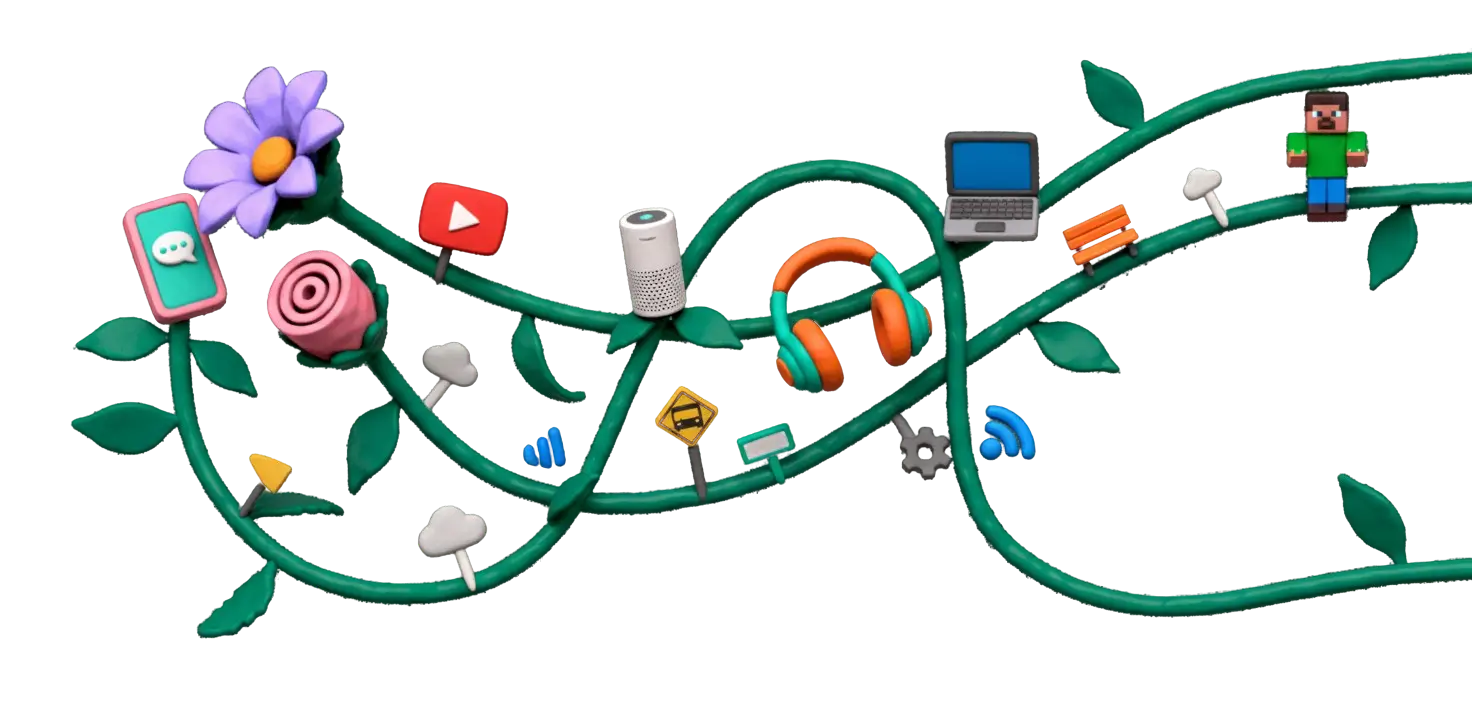
Khan Academy & educational apps — screen time for learning (2025)
"But it's educational!" Should screen time for learning count differently than entertainment? Yes and no.Educational apps can be powerful—or just as addictive as games. Here's how to tell the difference and use them effectively.
Does "educational" screen time count differently?
The short answer: It depends. Not all "educational" apps are created equal. Khan Academy teaching math? Yes, that's different from TikTok. But many apps marketed as "educational" are just gamified busywork designed to keep kids clicking.
✅ What counts as quality educational screen time:
- Active learning: Requires thinking, problem-solving, creation
- Aligned with curriculum: Supports what they're learning in school
- Has a clear endpoint: Lessons have goals, not infinite scrolling
- Encourages mastery: Progress depends on understanding, not just time spent
- Offline application: Skills transfer to real life
❌ What's "edutainment" (not really learning):
- Gamified rewards: Dopamine from badges/points, not understanding
- Passive consumption: Watching videos without interaction
- Busywork disguised as learning: Repetitive tapping, not critical thinking
- Algorithm-driven: "Just one more level!" = infinite engagement
- Marketing-first: Designed to sell subscriptions, not educate
The key question:
"If this app disappeared tomorrow, would my child miss the entertainment or the learning?"If the answer is entertainment, it's not really educational—it's just gamified screen time with a learning veneer.
Honest reviews of popular educational apps
Khan Academy (FREE)
Subjects: Math, science, history, economics, SAT prep
✅ Pros:
- Genuinely educational (not gamified busywork)
- Free, no ads, no in-app purchases
- Aligned with school curriculum
- Teaches mastery, not completion
- Respected by educators
⚠️ Limitations:
- Requires self-motivation (not flashy/addictive)
- Videos can be passive if not followed by practice
- Better as supplement, not replacement for teaching
Verdict: Excellent. One of the best free educational resources. Count it as learning time.
Duolingo (FREE / $13/month Premium)
Subjects: Language learning (40+ languages)
✅ Pros:
- Makes language learning fun and accessible
- Effective for vocabulary and basic grammar
- Builds daily habits (streak motivation)
- Free version is functional
⚠️ Limitations:
- Gamified to be addictive (streak anxiety)
- Won't make you fluent (needs real conversation)
- Free version has ads and limited hearts
- Can become mindless repetition
Verdict: Good for building basic skills. Treat it like practice, not full learning. Limit to 20-30 min/day.
Prodigy Math (FREE / $10-20/month Premium)
Subject: Math (grades 1-8)
✅ Pros:
- Kids actually enjoy practicing math
- Adaptive difficulty (adjusts to skill level)
- Covers curriculum standards
❌ Cons:
- Heavy monetization: Constant upsells for premium pets/gear
- Kids play for rewards, not learning
- Game mechanics prioritize engagement over mastery
- Can reinforce "learning = earning prizes" mindset
Verdict: Mixed. Better than no math practice, but the monetization is problematic. Use sparingly.
ABCmouse / Homer / Epic! (Subscription-based)
Subjects: Early learning (reading, math, science for ages 2-8)
Verdict: Fine for younger kids, but prioritize real books, hands-on play, and parent interaction over screen-based learning.
How to use educational apps effectively
✅ Best practices:
- Set time limits: Even Khan Academy shouldn't replace books, offline learning, and play. Cap at 30-60 min/day.
- Use as supplements, not replacements: Apps support learning—they don't replace teachers, books, or tutors.
- Check for understanding: "Show me what you learned today." If they can't explain it, they didn't learn it.
- Avoid gamified busywork apps: If it's designed to hook them with rewards, it's not education—it's engagement.
- Balance screen and analog: 30 min Khan Academy + 30 min reading a book > 2 hours on an app.
The "active vs. passive" test:
Active learning: Solving problems, writing code, answering questions, creating.
Passive consumption: Watching videos, tapping through flashcards mindlessly, earning points without thinking.
Prioritize active. Limit passive.
Final thought: Screen time isn't the goal—learning is
Educational apps are tools. Used well, they're powerful—Khan Academy has taught millions of students. Used poorly, they're just screen time with a guilt-free label.
Don't let "educational" justify unlimited screen time. Balance is key. The best learning still happens offline: books, conversations, hands-on exploration, and real-world experiences.
Action steps for this week:
- Audit current "educational" apps: Are they truly teaching, or just gamified busywork?
- Try Khan Academy if you haven't: Free, no ads, genuinely educational
- Set limits: Even educational screen time needs boundaries (30-60 min/day max)
- Check for understanding: "Teach me what you learned today"
- Balance screens with books: For every 30 min on an app, 30 min reading
Education technology is a tool, not a substitute for curiosity, critical thinking, and real-world learning.